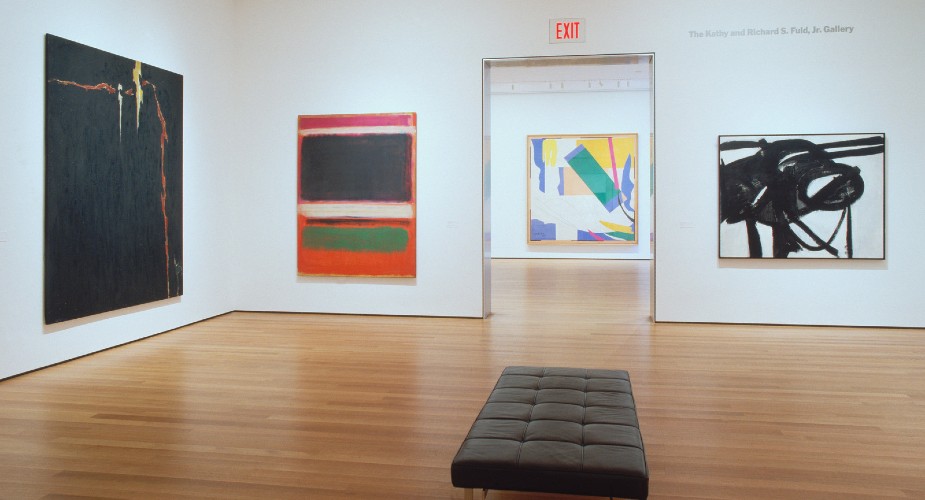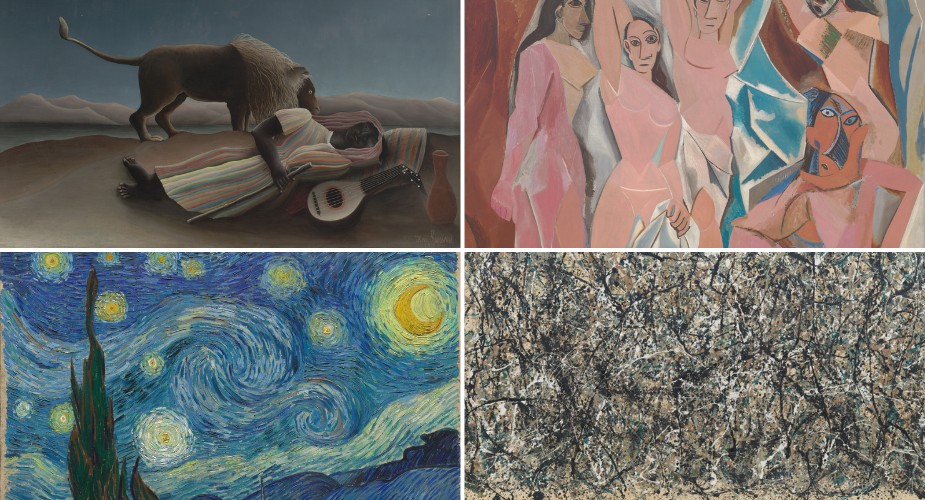The Museum of Modern Art (MoMA) in New York City is one of the world’s most influential and holds the most extensive collection of modern art.
Its Department of Painting and Sculpture oversees one of the most expansive and noteworthy collections of late 19th and 20th-century modern art.
Origins and History
MoMA was founded in 1929 by a small group of wealthy arts patrons, including Abby Aldrich Rockefeller, Lillie P. Bliss, and Mary Quinn Sullivan.
Their original vision was to create a museum that would serve as a laboratory for the new art of the 20th century.
The museum officially opened in November 1929, occupying rented space on the 12th floor of a midtown Manhattan office building.
Works displayed at the opening included pieces by Gauguin, Cézanne, Seurat, Van Gogh, and the School of Paris artists, such as Matisse and Picasso.
This marked one of the world’s first permanent museum collections of modern art.
Under the direction of the museum’s first director, Alfred H. Barr Jr., the early collection comprised mostly of late 19th-century and early 20th-century European works.
Exhibitions during the 1930s introduced New York audiences to fauvism, cubism, constructivism, and surrealism.
The Painting and Sculpture Collection

Over the decades, the museum’s painting and sculpture holdings have grown to over 150,000 works spanning the mid-19th century to the present day.
The collection is organized into chronological, national, and thematic areas:
19th and Early 20th Century Art: Post-Impressionist works, fauvism, expressionism, cubism, futurism
Early Modernist Art: Abstraction, surrealism, School of Paris painters, mural studies by Diego Rivera
Mid-Century Art: Abstract Expressionism, Arte Povera, color field painting
Late Modernist Art: Pop, minimalism, neo-Dada
Contemporary Art: Installation, new media, performance
Photography: Eugène Atget, Man Ray, Walker Evans, Andy Warhol
Prints and Illustrated Books: Large works on paper collection ranging from old master prints to contemporary technologies
Architecture and Design: Models, drawings, and furnishings showcasing modern design
A Global Perspective: Galleries dedicated to Latin American art from the 1920s onward, Eastern European art since the 1950s, contemporary Asian art
Themes: Exhibitions centered on topics such as abstraction, the figure in modern art, modern myths, etc.
Iconic Works

Many paintings that have defined modern art movements are permanently housed in MoMA’s galleries. Iconic works include:
- Starry Night (1889) by Vincent Van Gogh
- Les Demoiselles d’Avignon (1907) by Pablo Picasso
- Campbell’s Soup Cans (1962) by Andy Warhol
- The Sleeping Gypsy (1897) by Henri Rousseau
- The Persistence of Memory (1931) by Salvador Dali
- The Two Fridas (1939) by Frida Kahlo
- Broadway Boogie-Woogie (1942-43) by Piet Mondrian
- Number 31 (1950) by Jackson Pollock
- Marilyn Diptych (1962) by Andy Warhol
Recent Exhibitions
Temporary exhibitions remain vital to MoMA’s mission of continually reexamining modern art and introducing new talent. Recent major exhibitions have included:
- Henri Matisse: The Red Studio, Paintings and Works on Paper: Displayed several of Matisse’s works together for the first time to provide insight into his creative process
- New Order: Art and Technology in the Twenty-First Century: Examined the impact of tech-based works from artists like Cory Arcangel, Simon Denny and Lynn Hershman Leeson
- Donald Judd: An in-depth exploration of the artist’s seminal impact on Minimalism
- Bodys Isek Kingelez: City Dreams: Featured untrained Congolese artist’s fantastical models of imaginary cities
The Cullman Education Building

In 2021, MoMA revealed a major expansion initiative – the David Geffen Wing and Cullman Education Building.
It now houses collection galleries dedicated entirely to Latin American and Eastern European art from the 20th century onwards.
The Cullman Building also contains the Starr Learning Center, a space with capacity for school groups, teacher workshops, family programs, and lectures.
It encourages hands-on direct interaction with museum resources.
Featured Image: Moma.org



